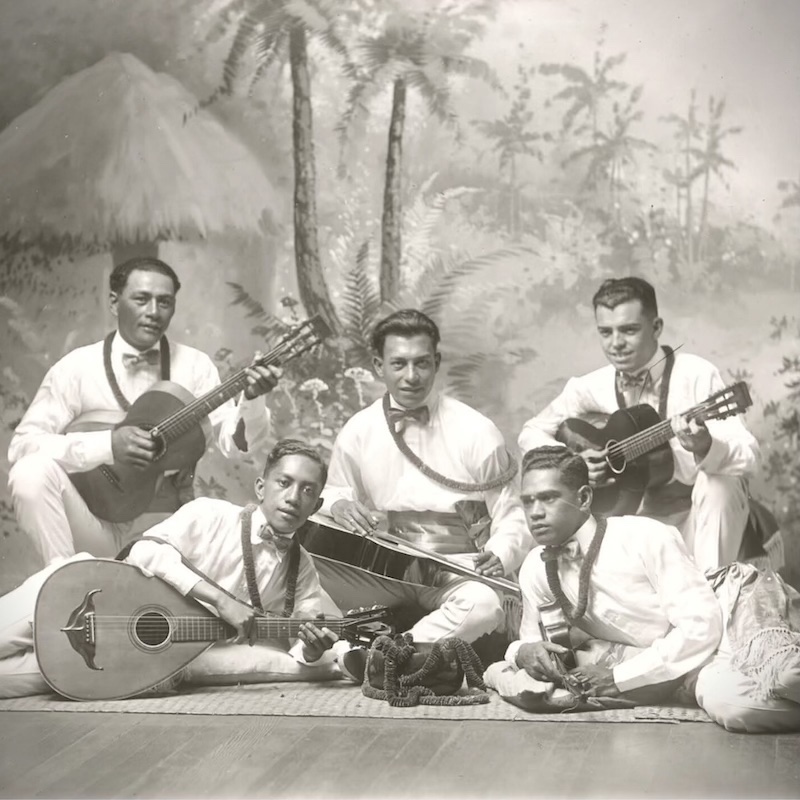
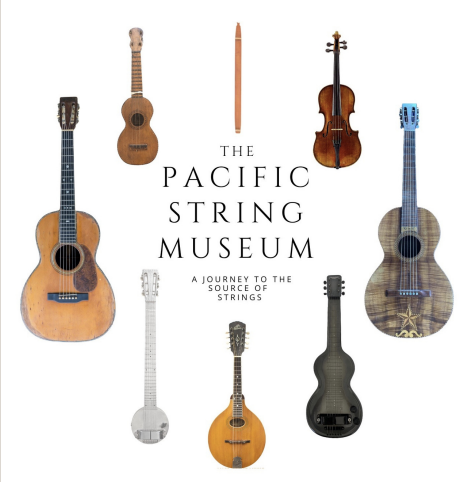
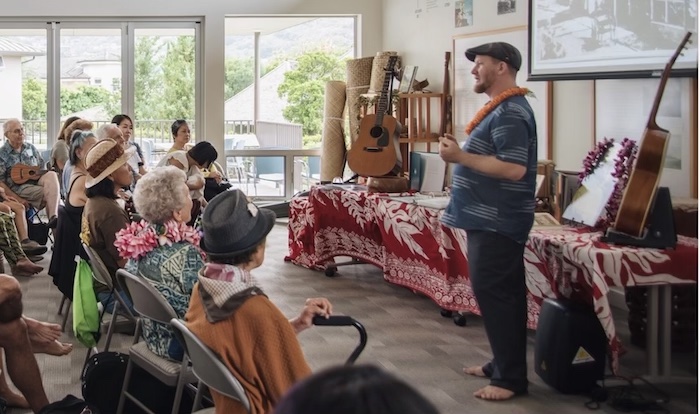
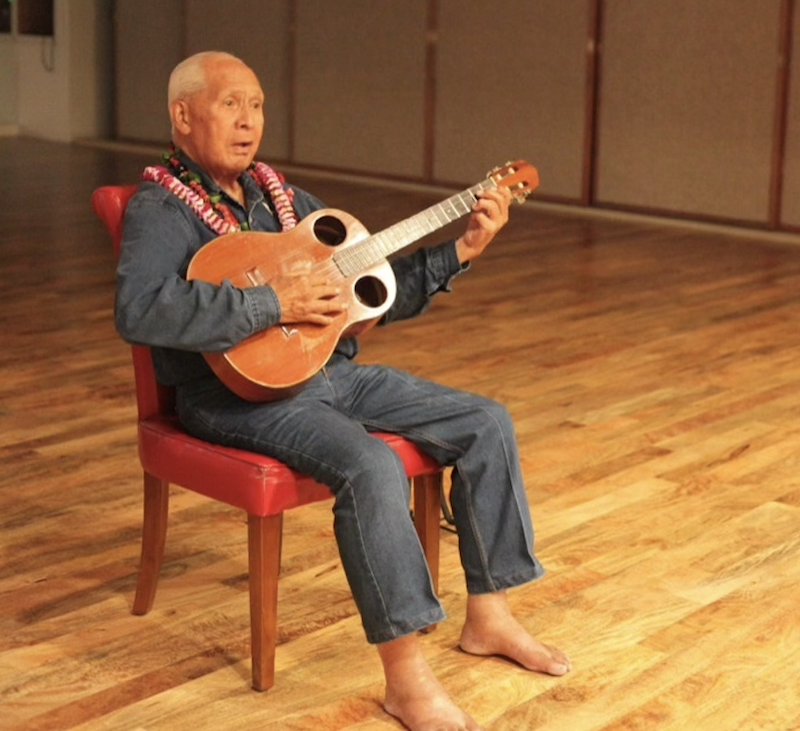
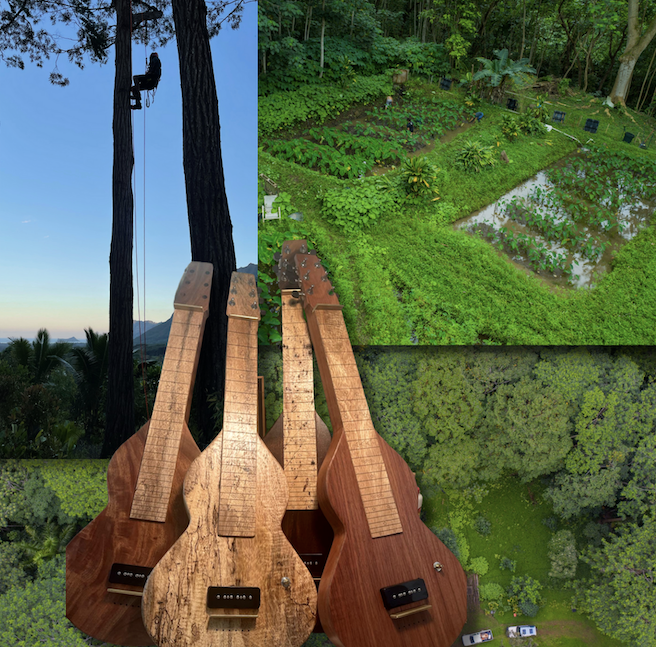
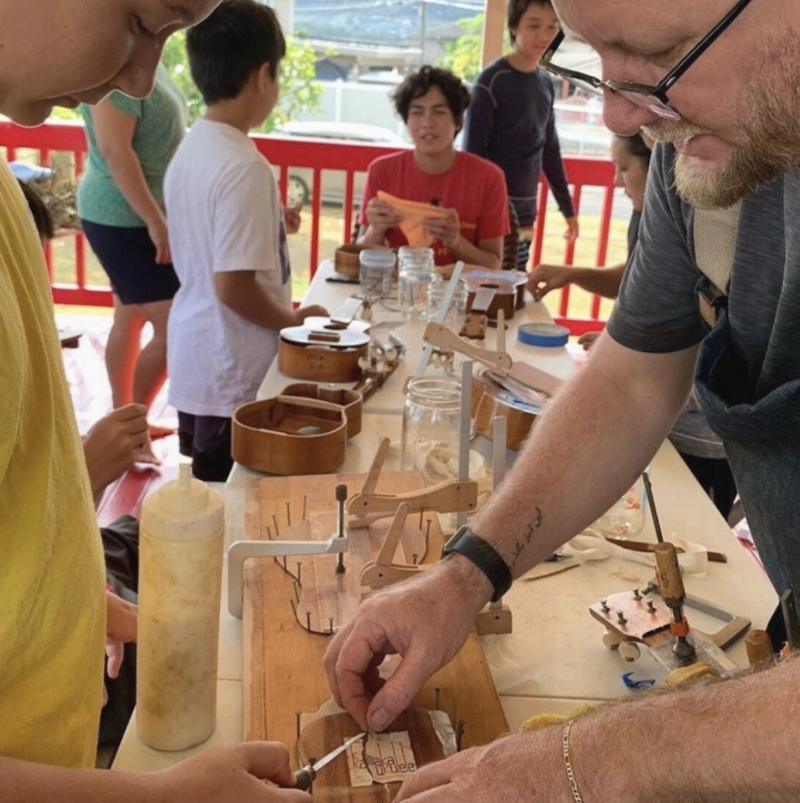
By Sarah Hodges
Across the Hawaiian Islands, a hui (group) of passionate musicians, historians, and Hawaiian cultural practitioners gather together to help lift the vitality of Hawaiian music. With diligence and attentiveness to detail, they carefully piece together a wide and scattered history, they educate and inspire youth, and are working to make Hawai’i’s music history accessible to all. Much of this work happens under the umbrella of Kealakai Center for Pacific Strings (KCPS), a nonprofit founded in 2019 to help restore and celebrate Hawai’i’s musical history.
As many hands and hearts work together, their work is joyous, albeit strenuous at times. Leading this vision is Ki-Lin Reece, a trusted luthier in Hawai’i, who came to the islands in 2002. (Read more about Ki-Lin’s story here)
The adjunct Pacific String Museum is a digital museum of historic Hawaiian music that displays instruments such as the ʻUkulele of Princess Kaʻiulani. Among its many featured instruments is the ukulele of the beloved, late Eddie Kamae, who incidentally played for us at Still & Moving Center in 2013, with our Kumu Mālia Helelā dancing hula to his well-loved song E Ku’u Morning Dew.
This digital museum will one day soon become an in-person museum to view this very special collection. Ki-Lin is currently curating the basement floor and galleries of the Iolani palace, and working with several other brick-and-mortar institutions to tell the story of Hawai’i’s stringed instruments. The collection can currently be viewed on the online platform.
Another program, an initiative for Hawai’i’s youth called Forest to Frets, takes wood from invasive trees in Hawai’i and up-cycles it, turning it into lap steel guitar kits and ‘ukulele kits.
KCPS is also developing an exciting digital music archive called the Pūmanamana Project that will serve as the world’s first public online archive of Hawaiian music and its history. Says Ki-Lin: “The recordings that we have go from the very first Hawaiian string bands which were some of the first string bands to be recorded – recorded by people such as Thomas Edison in 1899. The fact that this recorded catalog spans over a century of music makes this a credible resource for learning and discovery.”
The Pūmanamana Project will provide a database of Hawaiian mele (song). The President of Kealakai Center, Professor Noah Ha’alilio Solomon, is a hula practitioner, and Hawaiian language scholar. Noah is currently taking hundreds of vintage Hawaiian music recordings and translating the lyrics, gleaning what makes each song significant. This resource will make it possible to search any word and find every song in the expansive database that relates to the word or topic.
“For example,” says Ki-Lin, “say you’re a hula hālau going to Merrie Monarch and you want to find a song that talks about a steamship, or anything else. You can put steamship in Hawaiian or in English into the search engine – everything’s bilingual – and all of a sudden, every song that ever mentioned a steamship will come to your computer screen, along with any newspaper article in Hawaiian or English that ever mentioned a steamship. It’s something that is being done for the first time.”
Hawaiian music is often described by people on the continent who don’t really understand the culture around it. So, this art archive is going to uplift and bring awareness of Hawai’i’s role in musical history. “We are so lucky to work together with so many wonderful musicians and cultural practitioners,” says Ki-Lin.
“It’s taken us a decade to pull this all together so far,” says Ki-Lin. “At the core of our vision, we hope every kid in Hawai’i will know about Hawai’i’s musical history and how important Hawai’i is in the formation of music worldwide. Within this history, there’s endless content for films, dissertations, Master’s degrees…new compositions waiting to be written.”
Discover more about KCP here: https://www.kcpstrings.com
Online museum archive: https://www.pacific-strings.org/

Get the Still & Moving App
This post is also available in: English (英語)

